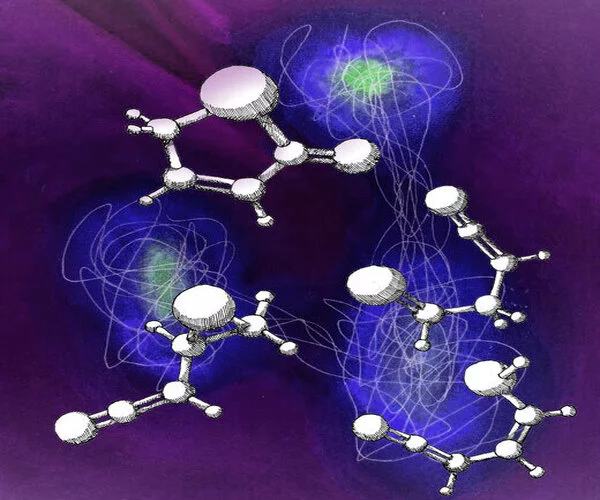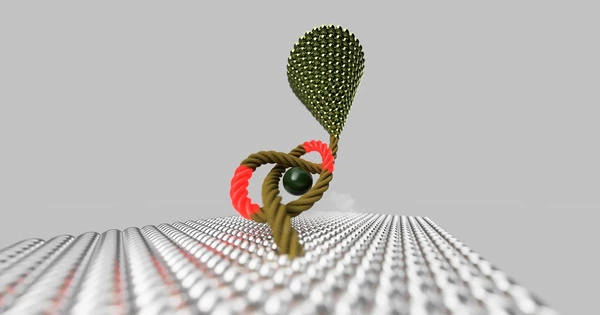The phrase “organic dream” refers to the goal of maintaining a healthy, functioning organism, and the phrase “molecular teamwork” emphasizes the importance of cooperation and collaboration between individual molecules to achieve that goal.
A domino-like structural transition in an organic semiconductor has been triggered by molecular engineers. The phenomenon may improve the performance of smartwatches, solar cells, and other organic electronics by saving energy and time. The virus that causes E. coli infection has a secret weapon: collaboration.
Always fighting for survival, the virus lands on an unassuming host cell and grips the surface with the tip of its tubular tail. The proteins in the tail then contract in unison, flattening its structure like a stepped-on spring and drawing the virus’s body in for the decisive strike. The tail can flex and flatten with ease due to the proteins’ collaboration. This process, known as molecular cooperativity, is common in nature but uncommon in non-living systems.
Researchers at the Beckman Institute for Advanced Science and Technology discovered a way to trigger this cooperative behavior in organic semiconductors. The energy- and time-saving phenomenon may help enhance the performance of smartwatches, solar cells, and other organic electronics. Their work was accepted for publication in Nature Communications.
Our research brings semiconductors to life by unlocking the same dynamic qualities that natural organisms like viruses use to adapt and survive. In the future, organic electronics could attach to our brains to improve cognition or be worn like a Band-Aid to convert our body heat into electricity.
Ying Diao
“Our research brings semiconductors to life by unlocking the same dynamic qualities that natural organisms like viruses use to adapt and survive,” said Ying Diao, a researcher at the Beckman Institute and a coauthor of the study.
Viruses may have mastered molecular cooperation, but crystals, which are non-living molecular structures classified by their symmetry, do not. Though aesthetically pleasing, the molecules that make up crystalline structures are diva-like and rarely work together. Instead, they put researchers to the test by plodding through structural transitions one molecule at a time – a process famously demonstrated by diamonds growing from carbon, which requires blistering heat, intense pressure, and thousands of years deep beneath the earth.
“Imagine taking down an elaborate domino display brick by brick. It’s exhausting and laborious, and once you’ve finished, you would most likely not have the energy to try it again,” said Daniel Davies, the study’s lead author and a researcher at the Beckman Institute at the time of the study.

Cooperative transitions, on the other hand, occur when molecules shift their structure in unison, like a row of dominoes falling to the floor. The collaborative method is fast, energy-efficient, and easily reversible, which is why the virus that causes E. coli infection can contract its protein-packed tail indefinitely with little energy loss.
Researchers have long struggled to replicate this cooperative process in non-living systems in order to reap the time and energy savings. Diao and Davies were particularly interested in this problem because they wondered how molecular teamwork might affect the electronics industry.
“Molecular cooperativity helps living systems operate quickly and efficiently,” Davies said. “We thought, ‘If the molecules in electronic devices worked together, could those devices display those same benefits?'”
Diao and Davies research organic electronic devices, which rely on semiconductors made from molecules such as hydrogen and carbon rather than inorganic ones such as silicon, which is a ubiquitous ingredient in today’s laptops, desktops, and smart devices.
“Because organic electronics are made from the same basic elements as living beings, such as people,” said Diao, who is also an associate professor of chemical and biological engineering at the University of Illinois Urbana-Champaign. “In the future, organic electronics could attach to our brains to improve cognition or be worn like a Band-Aid to convert our body heat into electricity.”
Diao researches the design of solar cells, which are wafer-thin window clings that absorb sunlight and convert it into electricity. Organic semiconductors that can flex without breaking and contour to human skin are also “an important part of the future of organic electronic devices,” according to Davies.
It’s a promising future, but creating dynamic organic semiconductors is an important step toward designing dynamic organic electronics like these. And in order for this to happen, the semiconductor molecules must work together.
Dominoes inspired the researchers’ approach to trigger molecular teamwork in a semiconductor crystal. They discovered that rearranging the clusters of hydrogen and carbon atoms spooling out from a molecule’s core – otherwise known as alkyl chains – causes the molecular core itself to tilt, triggering a crystal-wide chain of collapse the researchers refer to as an “avalanche.”
“The molecules, like dominoes, do not move from their fixed position. Only their tilt varies “Davies stated. Tilting a string of molecules, on the other hand, is neither as simple nor as tactile as picking up a domino and rotating it 90 degrees. The researchers gradually applied heat to the molecule’s alkyl chain on a much smaller scale than a plastic game piece; the increased temperature induced the domino-like effect.
Heat was used to rearrange the molecules’ alkyl chains, which caused the crystal to shrink, just like the virus’s tail before E. coli infection. This property translates to an easy, temperature-induced on-off switch in an electronic device. This discovery’s applications have yet to be fully realized; for the time being, the researchers are overjoyed with the first step.
















